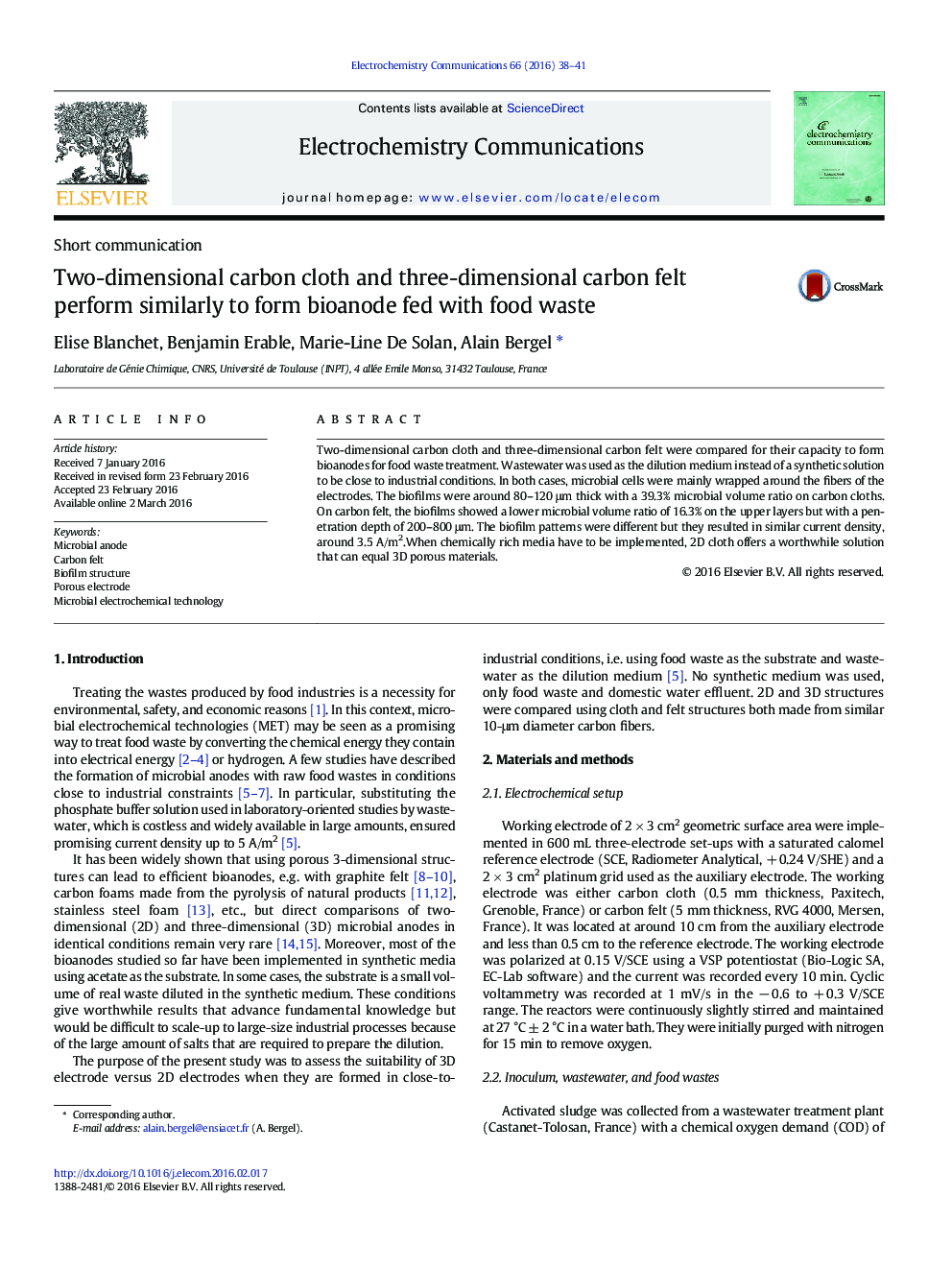| Article ID | Journal | Published Year | Pages | File Type |
|---|---|---|---|---|
| 178679 | Electrochemistry Communications | 2016 | 4 Pages |
•Bioanodes formed with 2D carbon cloth or 3D carbon felt were compared.•Food waste and wastewater were used as the substrate and the medium, respectively.•2D cloth electrodes gave as high current densities than 3D felt electrodes.•The microbial penetration in the 3D structure was limited due to pores clogging.•2D cloth ensured dense filling of the biofilm volume by microbial cells.
Two-dimensional carbon cloth and three-dimensional carbon felt were compared for their capacity to form bioanodes for food waste treatment. Wastewater was used as the dilution medium instead of a synthetic solution to be close to industrial conditions. In both cases, microbial cells were mainly wrapped around the fibers of the electrodes. The biofilms were around 80–120 μm thick with a 39.3% microbial volume ratio on carbon cloths. On carbon felt, the biofilms showed a lower microbial volume ratio of 16.3% on the upper layers but with a penetration depth of 200–800 μm. The biofilm patterns were different but they resulted in similar current density, around 3.5 A/m2.When chemically rich media have to be implemented, 2D cloth offers a worthwhile solution that can equal 3D porous materials.
